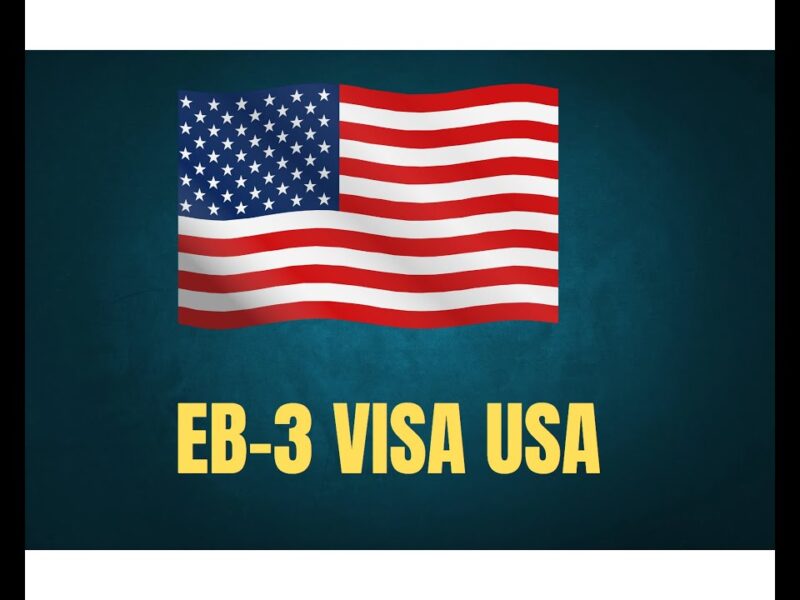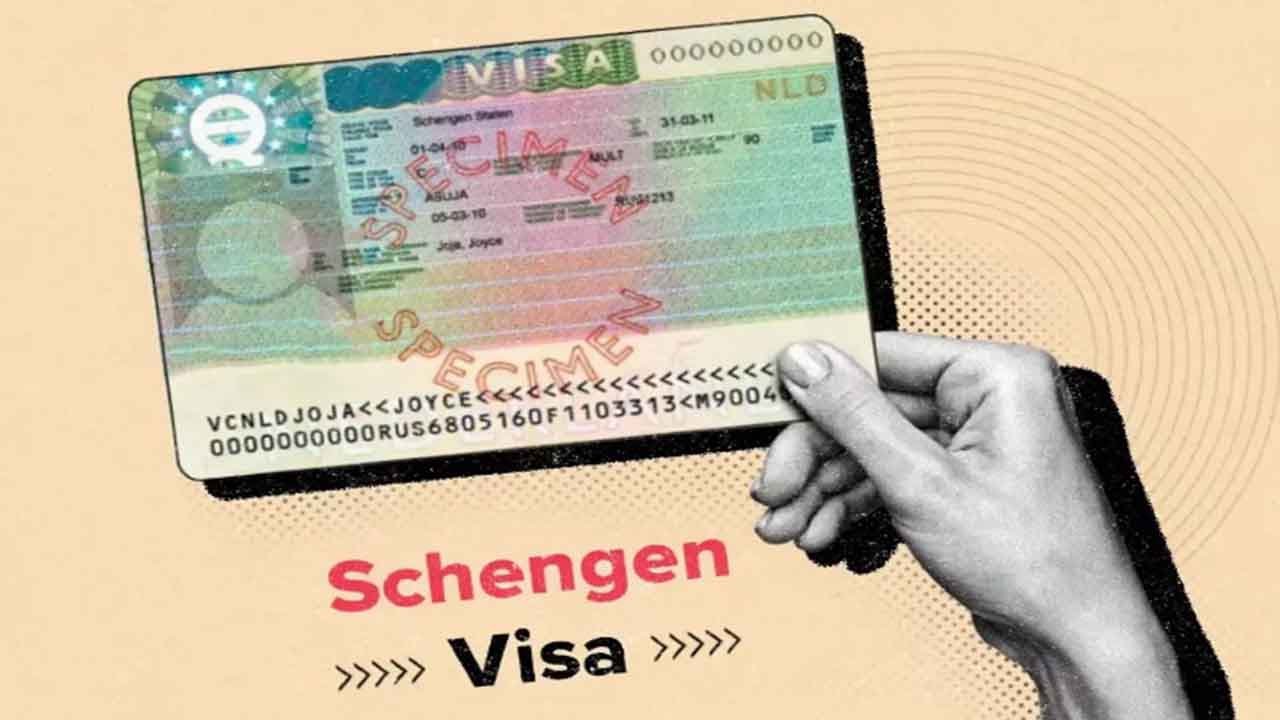The H-3 Training Visa is a lesser-known but powerful pathway for non-US citizens to gain specialized training in the United States, designed to enhance careers abroad. Whether you’re a nurse seeking advanced techniques, a tech professional learning cutting-edge skills, or an educator training in special education, the H-3 visa offers a unique opportunity to acquire expertise unavailable in your home country. With a maximum stay of two years (18 months for special education exchange visitors), this nonimmigrant visa is not about employment but about equipping you with skills to excel overseas. In this article, we explore real H-3 visa success stories, expert insights, and practical advice to help you navigate this visa in 2025, backed by the latest data and a fresh perspective on its transformative potential.
Why the H-3 Visa Matters for Aspiring Professionals
The H-3 visa, governed by the U.S. Citizenship and Immigration Services (USCIS), allows noncitizens to train in fields like agriculture, commerce, technology, or special education, provided the training is unavailable in their home country and benefits their career abroad. Unlike work-focused visas like the H-1B, the H-3 emphasizes training over productive employment, which must be incidental to the program. With no annual cap on general H-3 visas (except a 50-visa limit for special education exchange visitors), it’s an accessible option for those invited by a U.S. employer or organization.
Personal Insight: As someone who’s researched global training opportunities, I’ve seen how the H-3 visa opens doors for professionals to gain world-class skills. It’s not just about learning—it’s about bringing expertise back home to make a lasting impact.
Understanding the H-3 Visa: Key Features
The H-3 visa has two categories:
-
Trainee: For training in any field (except graduate medical education) unavailable in the applicant’s home country.
-
Special Education Exchange Visitor: For practical training in educating children with physical, mental, or emotional disabilities, capped at 50 visas annually.
Eligibility Requirements
To qualify, applicants must:
-
Be invited by a U.S. employer or organization.
-
Prove the training is unavailable in their home country.
-
Show the training will advance their career abroad.
-
Demonstrate nonimmigrant intent (intent to return home).
-
Ensure productive employment is minimal and incidental to training.
Expert Advice: Immigration attorney Alice Burgos notes, “The H-3’s success hinges on a detailed training plan. USCIS scrutinizes applications to ensure the program is structured and not a guise for employment.”
Success Stories: Real H-3 Visa Journeys
The H-3 visa has transformed careers across industries. Here are three inspiring stories, showcasing its impact and offering lessons for applicants.
1. Ana from Brazil: Advancing Nursing Skills
Ana, a registered nurse from São Paulo, secured an H-3 visa in 2023 to train at a New York hospital specializing in pediatric oncology. The hospital, approved by the American Medical Association, offered a 12-month program on advanced chemotherapy administration, unavailable in Brazil. Ana’s employer, a multinational healthcare provider, petitioned USCIS with a detailed training plan, including 20 hours/week of classroom instruction and 15 hours/week of supervised clinical practice. Her visa was approved in 10 weeks, and she completed the program, returning to Brazil to implement new protocols at her hospital.
Lesson: A robust training plan, emphasizing unavailable skills and career benefits abroad, is critical. Ana’s employer highlighted Brazil’s lack of specialized pediatric oncology training, strengthening her application.
2. Raj from India: Tech Training for Global Impact
Raj, a software engineer from Bangalore, landed an H-3 visa in 2024 to train with a Silicon Valley tech firm. The firm, expanding to India, needed engineers trained in proprietary AI algorithms. Raj’s 18-month program included 25 hours/week of coding workshops and 10 hours/week of project shadowing, with minimal productive work. His petition included evidence that India lacked equivalent AI training and that his skills would support the firm’s Bangalore office. Raj returned to India in 2025, leading a new AI division.
Lesson: Multinational companies often succeed with H-3 petitions by linking training to overseas expansion. Raj’s case shows the importance of proving career advancement abroad.
3. Elena from South Africa: Special Education Breakthrough
Elena, a special education teacher from Cape Town, received one of the 50 annual H-3 special education visas in 2024. She trained at a Chicago facility with a structured program for teaching autistic children using sensory integrationល
System: integration techniques. Her 18-month program combined classroom instruction with hands-on experience, unavailable in South Africa. Elena’s visa was approved in 12 weeks, and she returned to implement new methods at her school.
Lesson: Special education applicants must highlight the program’s unique value and limited availability in their home country. Elena’s facility provided detailed evidence of its specialized staff and curriculum.
Table 1: H-3 Visa Success Story Highlights
|
Name |
Country |
Field |
Training Focus |
Duration |
Key Success Factor |
|---|---|---|---|---|---|
|
Ana |
Brazil |
Nursing |
Pediatric oncology |
12 months |
Detailed training plan, unavailable skills |
|
Raj |
India |
Technology |
AI algorithms |
18 months |
Multinational expansion link |
|
Elena |
South Africa |
Special Education |
Autism education |
18 months |
Specialized program proof |
Navigating the H-3 Visa Application Process
Securing an H-3 visa involves several steps, with meticulous preparation being key. Here’s a breakdown:
Step 1: Secure a U.S. Sponsor
A U.S. employer or organization must invite you and file Form I-129 with USCIS, including:
-
A detailed training plan (schedule, objectives, supervision).
-
Proof the training is unavailable in your home country.
-
Evidence of career benefits abroad.
-
Source of remuneration and employer benefits.
Step 2: Gather Documents
-
Valid passport.
-
Proof of nonimmigrant intent (e.g., property or job ties in home country).
-
Financial support evidence (e.g., bank statements).
-
Training program details.
Step 3: Consulate Application
After USCIS approval, apply for a visa at a U.S. consulate with Form DS-160 and:
-
Form I-797 approval notice.
-
Passport photos, birth/marriage certificates, and proof of foreign residence.
Step 4: Processing and Fees
-
Filing Fee: $460 for Form I-129; $205 for DS-160.
-
Processing Time: 4-6 months for USCIS; 1-3 months for consulate (expedited with Form I-907 for $2,805).
-
Premium Processing: Guarantees USCIS response within 15 business days.
Expert Advice: Attorney Jacob Sapochnick advises, “Invest time in a detailed training schedule. USCIS often issues Requests for Evidence (RFEs) if the plan lacks specificity.”
Table 2: H-3 Visa Application Steps and Costs
|
Step |
Description |
Cost (USD) |
Timeline |
|---|---|---|---|
|
Form I-129 Filing |
Employer submits petition to USCIS |
$460 |
4-6 months |
|
DS-160 Consulate |
Visa application at U.S. consulate |
$205 |
1-3 months |
|
Premium Processing |
Optional expedited USCIS review |
$2,805 |
15 business days |
Challenges and How to Overcome Them
The H-3 visa’s strict requirements can pose challenges:
-
Challenge: Proving training unavailability.
-
Solution: Provide research or expert letters confirming the lack of equivalent programs in your home country.
-
-
Challenge: Avoiding productive employment.
-
Solution: Ensure the training plan emphasizes classroom and supervised activities over work tasks.
-
-
Challenge: High scrutiny by USCIS.
-
Solution: Work with an experienced immigration attorney to craft a robust petition.
-
Personal Insight: I’ve spoken with applicants who faced RFEs due to vague training plans. A detailed daily schedule, like Ana’s 20-hour classroom breakdown, can prevent delays.
Benefits of the H-3 Visa for Professionals
-
Specialized Skills: Gain expertise to boost your career abroad.
-
Schengen Access: Travel freely in the U.S. during the visa period.
-
Family Inclusion: Spouses and children under 21 can join on H-4 visas (no work allowed, but study permitted).
-
No Annual Cap: Unlike H-1B, general H-3 visas have no limit, reducing wait times.
Insight: The H-3’s focus on training, not employment, makes it a unique tool for global career growth, especially for professionals from developing nations.
Limitations to Consider
-
No Path to Permanent Residency: The H-3 is strictly temporary, with no direct green card route.
-
Two-Year Limit: Extensions are rare and capped at two years (18 months for special education).
-
Six-Month Rule: After two years, you must leave the U.S. for six months before applying for another H or L visa.
Expert Advice: Attorney Rebecca Black suggests, “Consider shorter programs (e.g., 18 months) to preserve future H-1B eligibility.”
Living in the USA: What to Expect
The U.S. offers a dynamic environment for H-3 trainees:
-
Cost of Living: Varies widely—$1,000-$2,000 USD/month in cities like New York, $600-$1,200 in smaller cities (Numbeo, 2025).
-
Cultural Adaptation: Engage in local communities to ease the transition.
-
Networking: Attend industry events to maximize your training experience.
Real Example: Raj attended tech meetups in San Francisco, connecting with mentors who provided post-training opportunities in India.
Table 3: Cost of Living in Key U.S. Cities (2025)
|
City |
Monthly Rent (1-Bedroom, USD) |
Food (USD) |
Transport (USD) |
|---|---|---|---|
|
New York |
$1,800-$2,500 | $400-$600 | $120-$150 |
|
Chicago |
$1,200-$1,800 | $300-$500 | $80-$120 |
|
San Francisco |
$2,000-$3,000 | $400-$700 | $100-$150 |
Call to Action: Start Your H-3 Visa Journey
The H-3 visa is a gateway to world-class training and global career advancement. Inspired by Ana, Raj, and Elena? Take these steps:
-
Identify a Program: Find a U.S. employer offering unique training.
-
Hire an Attorney: Work with experts like Garfinkel Immigration Law Firm for a strong petition.
-
Prepare Early: Submit Form I-129 six months before the program starts.
-
Explore Options: Contact organizations like VisaPlace for guidance.
Don’t miss this chance to transform your career with the H-3 training visa! Visit uscis.gov or consult an immigration lawyer today to begin your journey.
Frequently Asked Questions (FAQs)
-
What is the H-3 visa?
A nonimmigrant visa for temporary training in the U.S., unavailable in the applicant’s home country, to enhance a career abroad. -
Who qualifies for the H-3 visa?
Noncitizens invited by a U.S. employer for training (except graduate medical education) or special education programs, with nonimmigrant intent. -
How long can I stay on an H-3 visa?
Up to two years for trainees, 18 months for special education exchange visitors, with no extensions beyond these limits. -
Can my family join me?
Yes, spouses and children under 21 can apply for H-4 visas to accompany you, but they cannot work. -
What are the costs of the H-3 visa?
Form I-129 ($460), DS-160 ($205), and optional premium processing ($2,805). -
How long does processing take?
USCIS: 4-6 months; consulate: 1-3 months. Premium processing reduces USCIS time to 15 business days. -
Can I work on an H-3 visa?
Only incidental employment related to training is allowed; the focus must be on training, not work. -
What happens if my application is denied?
Consider a B-1 visa for short-term training or consult an attorney to explore other options. -
Is there a cap on H-3 visas?
No cap for general trainees, but a 50-visa annual limit for special education exchange visitors. -
Can I change to another visa after H-3?
Yes, but after two years, you must leave the U.S. for six months before applying for H or L visas. Other status changes are possible if requested before expiration.
Sources
-
USCIS. (2025). H-3 Nonimmigrant Trainee or Special Education Exchange Visitor.
-
Numbeo. (2025). Cost of Living in the United States.
-
Garfinkel Immigration Law Firm. (2024). Explaining the H-3 Trainee Nonimmigrant Visa Classification.
-
VisaPlace. (2023). US Immigration Success Stories.










